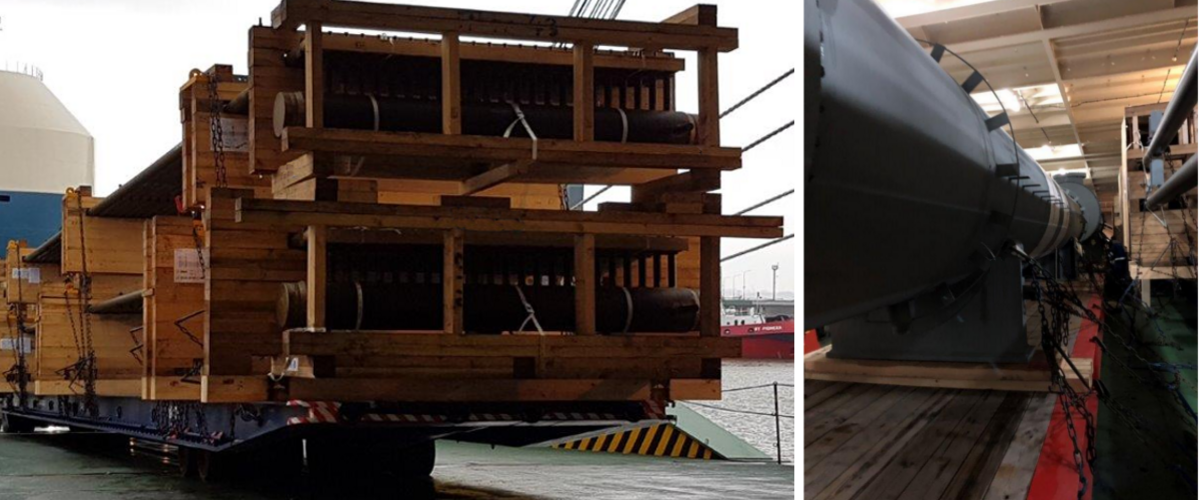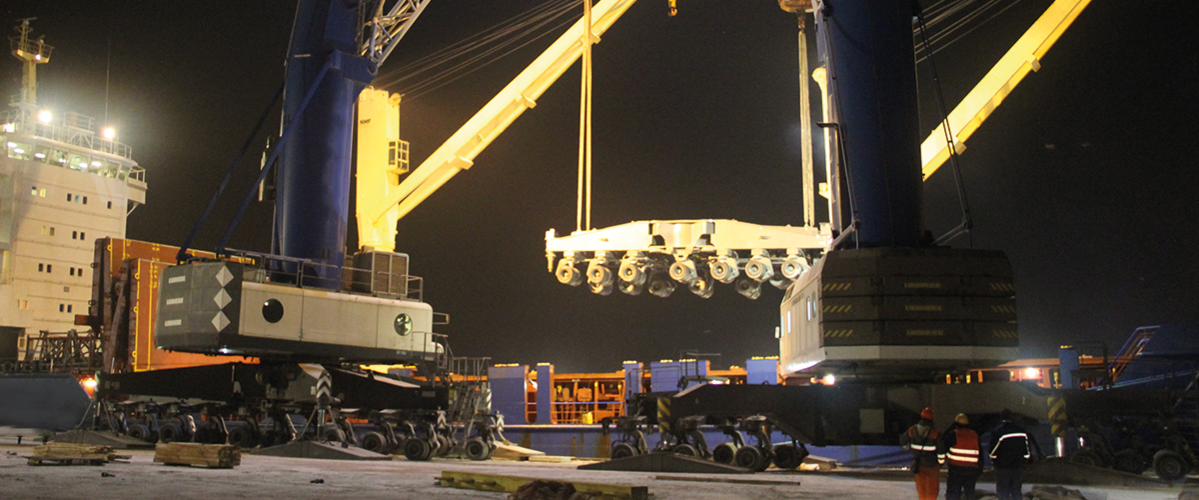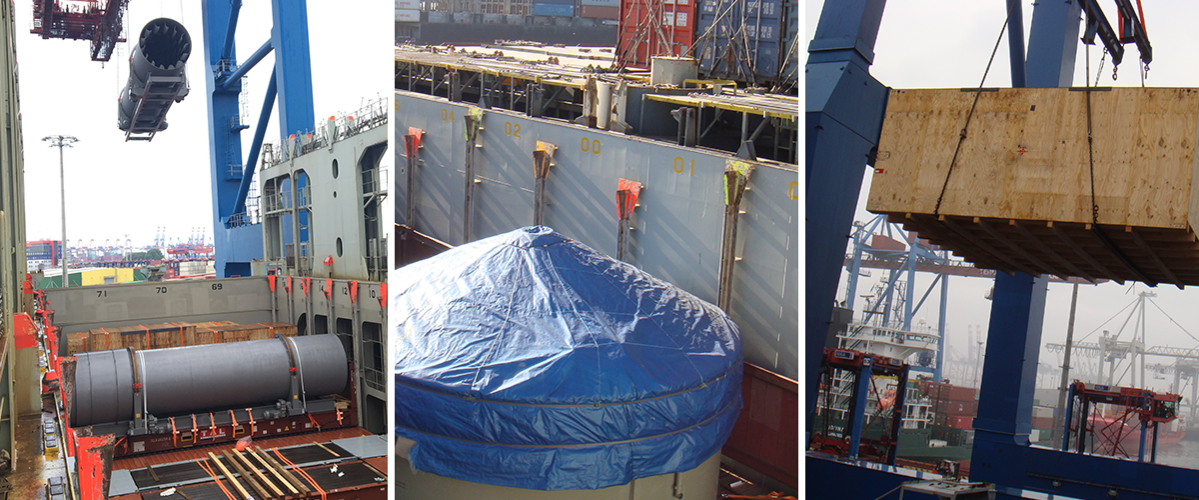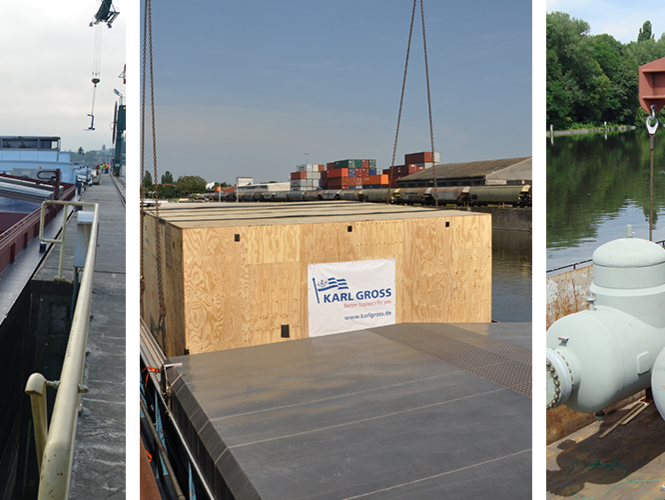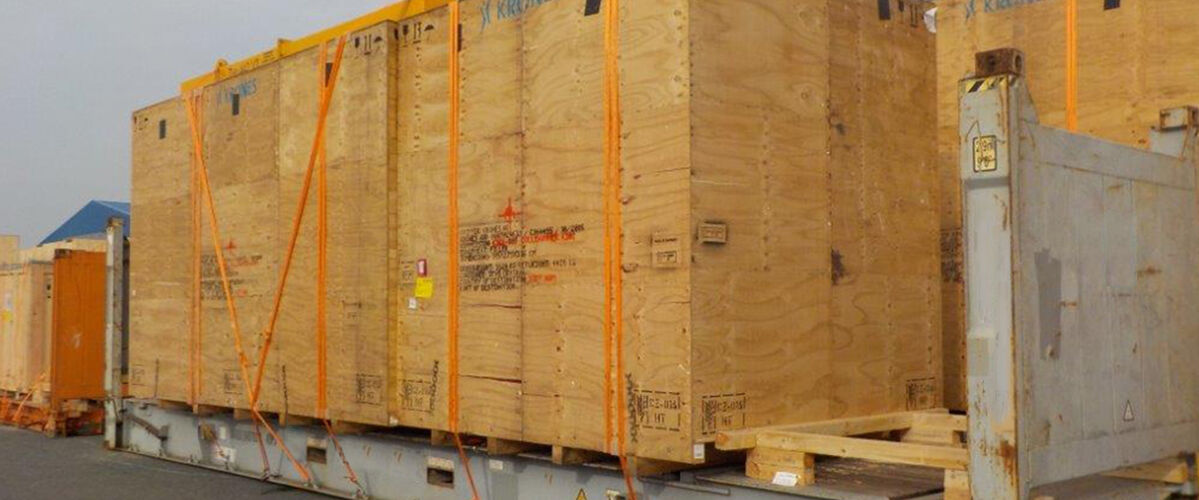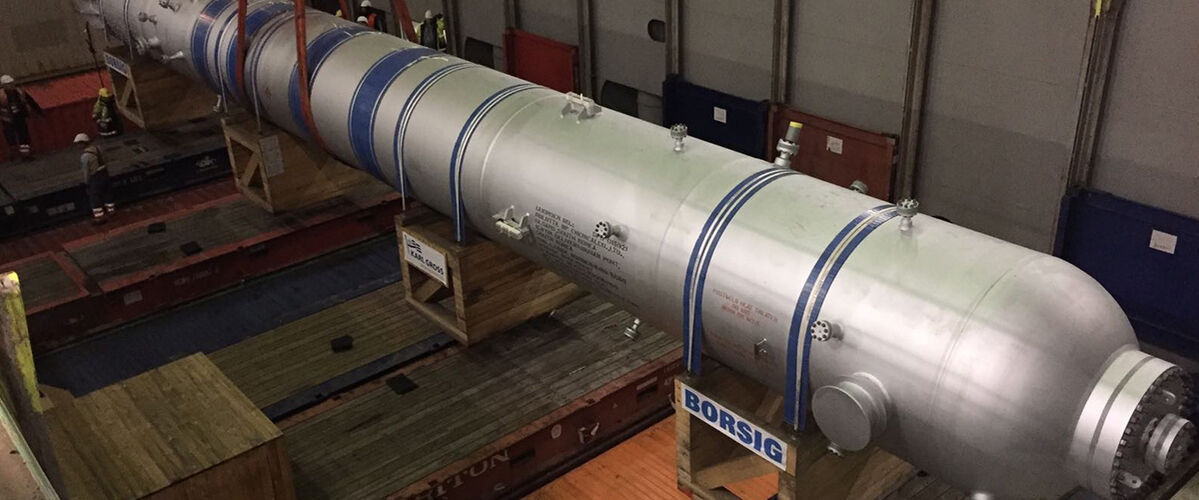Transporting oversize cargo unfitted for ro/ro shipping on a ro/ro-vessel – that already seems like a strange thing to do. But that was exactly the challenge our project-specialists of the Karl Gross Group had to face. Why? Key was to meet the customer’s timing requirements in regards to delivery date and ro/ro shipping proved the most suitable option in this regard.
The packing list included pieces with overwidth and overlength which required a unique loading and lashing concept. Thinking outside of the box and extensive know-how were the key factors that led to a solution.
The transport order came from a renowned producer of specialized equipment for the petrochemical industry. More than 100 freight pieces were to be shipped from two locations in Germany to China. “Among them were plant components that weighed almost 100 tons and reached lengths of up to 30 meters and widths of up to five meters”, our project cargo specialists say.
Ro/ro-vessel provide a short and reliable transit time.
Finding a shipping solution which provides a short and reliable transit time. “Usually such freight pieces would be ‘typical breakbulk cargo’”, our Hamburg team colleagues explain. “But in this case a breakbulk vessel was not an option because the delivery was under time pressure.” As breakbulk vessels usually do not have fixed routes and often stop to take in additional cargo, they typically have longer transit times compared to other shipping options.
Karl Gross came up with an unusual solution: Ro/ro shipping. “Unlike breakbulk vessels, ro/ro-ships mostly operate in liner service and therefore have reliable departure and transit times”, our project logistics team in Hamburg explains.
But: The cargo’s dimensions posed a special challenge for loading on board and – even more important – the nature of goods required a unique concept for on-board securing as the cargo itself did not allow for any direct lashing. But our specialists also managed to work out a solution for this obstacle.
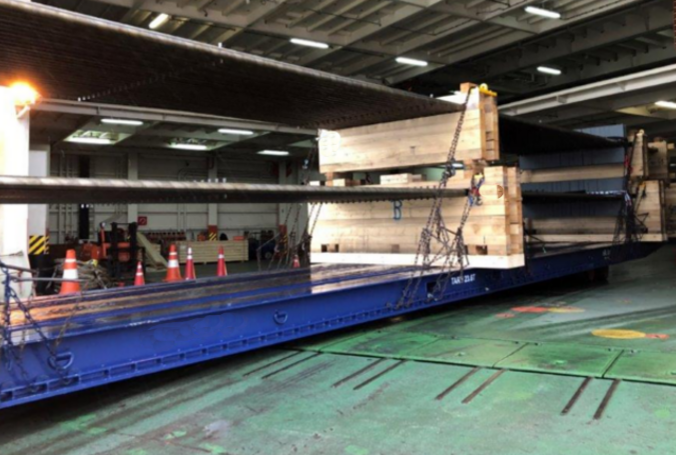
A special concept for special cargo
“We used mafi-trailers to roll the oversized cargo pieces on board of the vessel. To ensure the stability for the cargo during the loading and discharging operations and to secure the freight pieces for the sea transport we had special constructions created as support structures for the cargo’s access dimension”, our colleagues explain.


